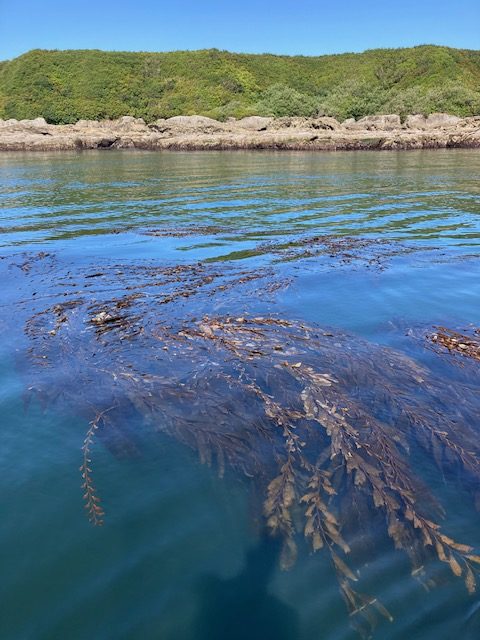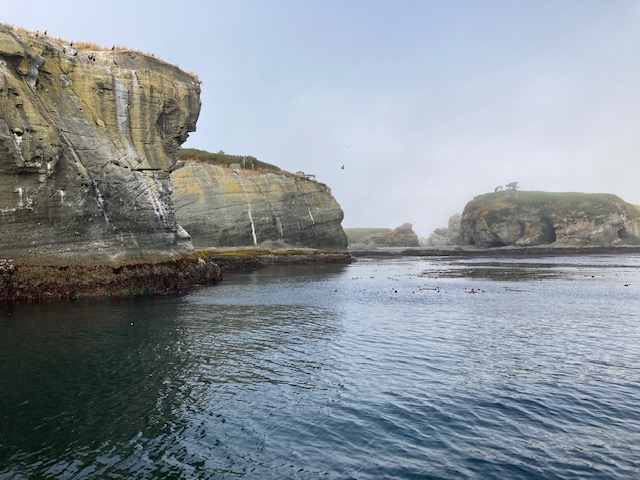Research divers from NOAA’s Northwest Fisheries Science Center (NWFSC) and Monterey Bay National Marine Sanctuary (MBNMS) surveyed kelp forests in Olympic Coast National Marine Sanctuary (OCNMS) in July 2021. OCNMS staff on the RV Tatoosh facilitated surveys at 5 different sites from Destruction Island in the south, around the Olympic Peninsula and northward into Neah Bay.
In 2015, NWFSC scientists began a collaborative monitoring program with scientists from OCNMS. Initially the focus was to examine how the reintroduction of sea otters affected coastal kelp forests. In 2018 Shelton et al. published a paper in the scientific journal Oecologia entitled, “From the predictable to the unexpected: kelp forest and benthic invertebrate community dynamics following decades of sea otter expansion.” Click here to request a copy of the publication.
But sea star wasting syndrome, multiple marine heatwaves, and a nearly coast-wide population increase of sea urchins combined to create a new imperative: how would kelp forests in OCNMS change? In 2016, OCNMS and NWFSC researchers added an MBNMS diver and altered the types of data collected from 5 sites (Destruction Island, Cape Johnson, Cape Alava, Tatoosh Island, and Neah Bay). These new kelp forest surveys, modeled after those conducted by the Partnership for Interdisciplinary Studies of Coastal Oceans (PISCO) in California and Oregon, sample benthic communities along 30 x 2 m belt transects in kelp beds at depths of 5 and 10 m, targeting 12 transects per depth zone and site in a random stratified sampling design. Divers collected information in four categories: fish, large mobile invertebrates, canopy-forming kelps, and substrate.
2021 represents the 5th year of data collection using the new methods, and only 2020 data are missing due to the pandemic and subsequent restrictions on NOAA field operations. Each day at a site, two areas were surveyed at two depths, 5 m and 10 m. Divers collected at least 3 replicate transects for targeted algae and invertebrates, fishes, and uniform point contact data.
Of the many interesting observations, it was striking that Cape Johnson lacked any urchins, despite rich algal diversity and abundance at the site. Urchins were low in number at Destruction Island, which is often frequented by sea otters. In contrast, urchins were numerous and very large (all three species) on parts of Tatoosh Island, which started to see a decline in kelp in some of the transects starting around 2018. It remains to be seen if the spread of urchins will continue at Tatoosh Island.
Below are photos from the 2021 research cruise, which took place July 26-30. All photos by Dr. Steve Lonhart, NOAA MBNMS.



